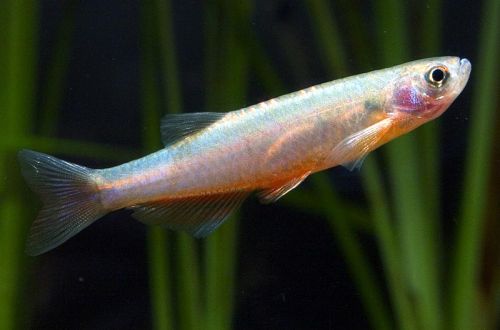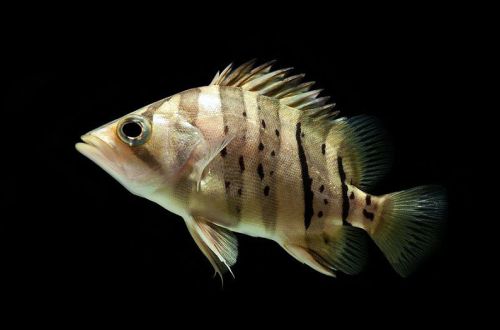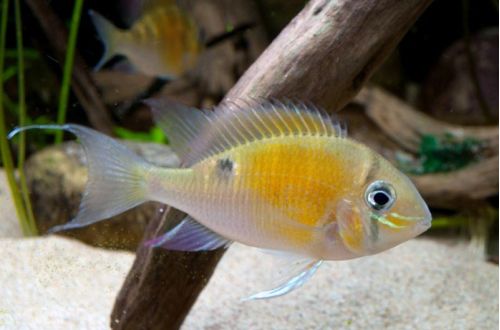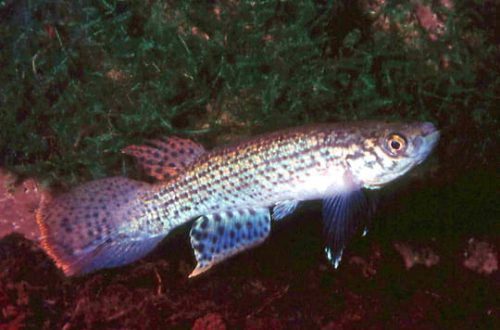
Pink Danio
Pink Danio, scientific name Danio roseus, belongs to the family Cyprinidae (Cyprinidae). Became available in amateur aquariums relatively recently, but has already managed to catch the fancy of many aquarists. Easy to keep and breed, hardy and perfectly compatible with other freshwater fish.

Contents
Habitat
It comes from Southeast Asia from the territory of Myanmar, Laos and northern Thailand. The fish is found in small channels of moderately flowing streams flowing under the canopy of tropical forests. The natural habitat is characterized by slightly murky waters, rocky substrates, and few aquatic vegetation.
Brief information:
- The volume of the aquarium – from 80 liters.
- Temperature – 18-25°C
- Value pH — 6.0–7.0
- Water hardness – 2–15 dGH
- Substrate type — stony
- Lighting – any
- Brackish water – no
- Water movement – light or moderate
- The size of the fish is 5 cm.
- Food – any food
- Temperament – peaceful
- Keeping in a group of 8-10 individuals
Description
Adults reach a length of about 5 cm. They have a slender body of pink color, the back is darker with a blue tint. Sexual dimorphism is weakly expressed, males are practically indistinguishable from females. The latter may appear larger, especially during the spawning season.
Food
Undemanding to the composition of food. In a home aquarium, it is allowed to use various dry foods (flakes, granules). If desired and possible, the daily ration can be diluted with live or frozen foods, such as bloodworms, daphnia, brine shrimp, etc.
Maintenance and care, arrangement of the aquarium
The recommended volume of the aquarium for long-term maintenance of Pink Danios starts from 80 liters. The decoration is not critical, in pet stores, for example, they are in empty tanks and feel great. The only thing worth paying attention to is the presence of free space for swimming, so you should not overload the aquarium with decorations and / or allow it to be overgrown with aquatic plants.
Despite the fact that conditions are variable in nature, when kept in an artificial environment, strong and sharp fluctuations in temperature and hydrochemical composition of water (pH / dGH) should not be allowed. Maintenance of an aquarium consists of several simple and standard procedures. The most important ones include: weekly replacement of part of the water with fresh water, regular removal of organic waste (feed residues, excrement), equipment prevention, monitoring and maintaining stable values of water hardness indicators, still alkaline composition.
Important! The fish are prone to jumping out, so it is recommended to use a lid.
Behavior and Compatibility
Peaceful mobile fish, prefers to be in a group of 8-10 individuals. With a smaller amount, it can become intimidated, lethargic, and life expectancy is noticeably reduced. Compatible with other non-aggressive freshwater species of comparable size. It is worth remembering that the activity of Pink Danios sometimes negatively affects slow fish.
Breeding / breeding
Easy to breed. Under favorable conditions, spawning is not uncommon. Fish scatter many eggs on the surface of the ground or in thickets of plants. The incubation period lasts 24-36 hours and depends on the water temperature. After a couple of days, the fry begin to swim freely. Newly born parents do not care about their offspring and, moreover, on occasion they will definitely feast on them. The threat of being eaten and not getting enough food leads to the death of the fry. Thus, in the main aquarium, juveniles rarely survive to adulthood.
If you plan to save the brood, then you will need to prepare a separate tank in advance, where the fertilized eggs will be placed. A capacity of 10–20 liters is enough, which is filled with water from the main aquarium, so that all hydrochemical indicators are identical. It is equipped with a simple airlift filter and a heater. A separate light source is not required, the light coming from the room will be enough. Arrangement is arbitrary.
Fish diseases
In a balanced aquarium ecosystem with species-specific conditions, diseases rarely occur. Often, diseases are caused by environmental degradation, contact with sick fish, and injuries. If this could not be avoided and the fish shows clear signs of illness, then medical treatment will be required. Read more about symptoms and treatments in the Aquarium Fish Diseases section.





